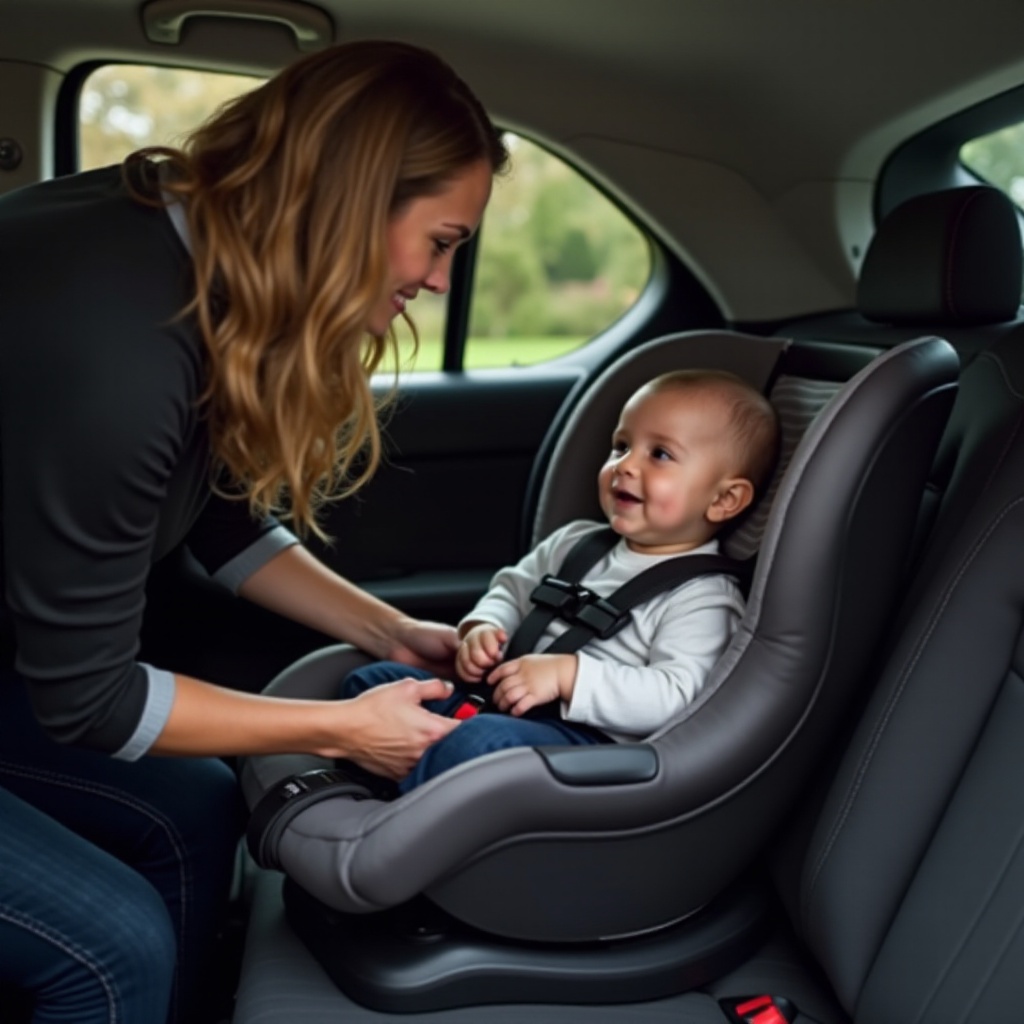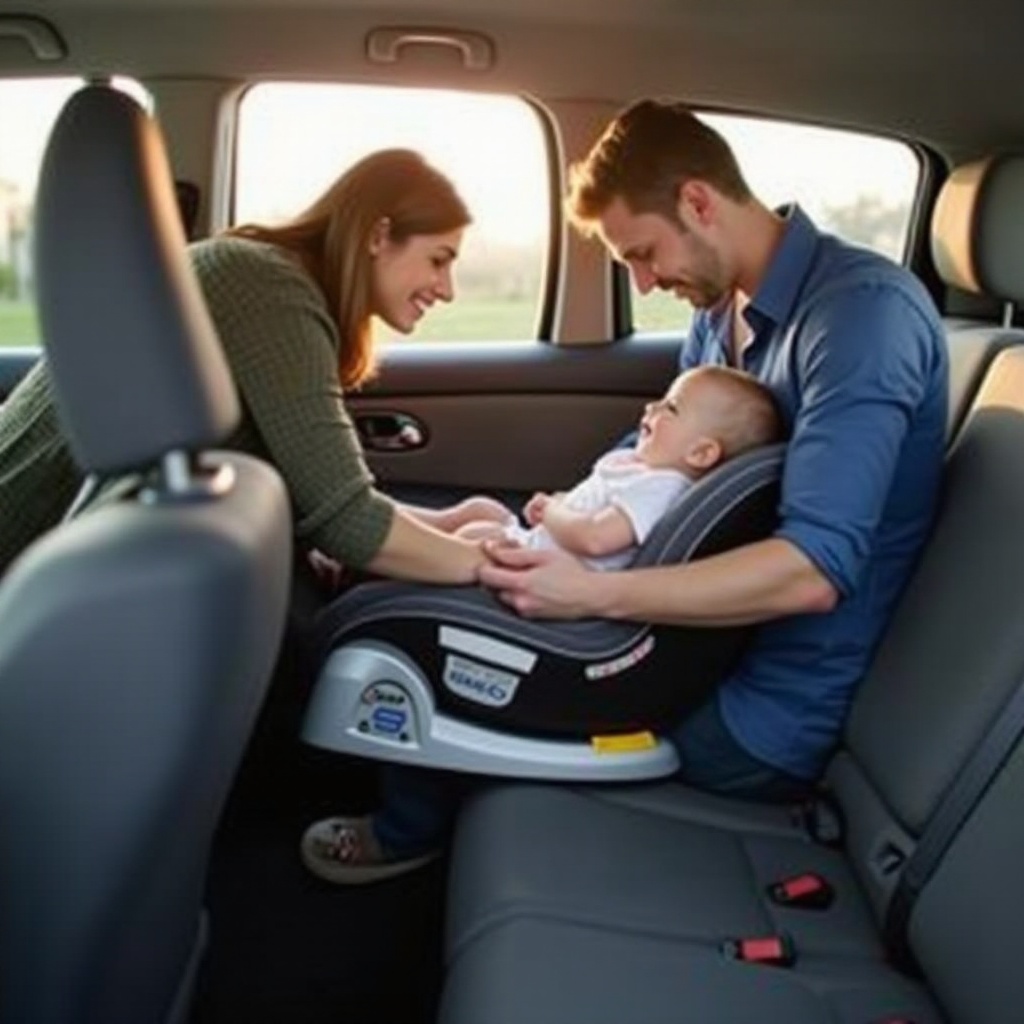Correctly placing your infant in a car seat is vital for their safety during travels. Car seats, when used appropriately, greatly reduce the risk of injury in the event of an accident. This guide covers everything parents and caregivers need to know to ensure their child’s car seat is as safe and secure as possible.
Introduction
Every parent prioritizes their child’s safety, making proper car seat usage a fundamental responsibility. Knowing how to correctly install a car seat and secure your infant can be life-saving. This comprehensive guide offers new parents and caregivers essential steps and tips to ensure infants are both safe and comfortable during every trip.

Understanding the Importance of Car Seat Safety
Car seats play a critical role in protecting infants from harm in car accidents. More than just a safety measure, they’re legally required in many regions. Recognizing the importance of correct car seat use empowers parents to follow safety guidelines diligently. Always ensure your car seat meets national safety standards to provide maximum protection.
Types of Car Seats Suitable for Infants
Choosing the right car seat for your infant involves understanding the available options:
-
Infant Car Seats: These rear-facing seats are designed for newborns and small babies. They are portable, often with a handle for easy transport, and are generally lighter. Infant car seats usually have a base that remains in the car, enabling quick and easy seat insertion and removal.
-
Convertible Car Seats: These adaptable seats transition from a rear-facing position for infants to a forward-facing position as your child grows. While less portable, they offer longevity and can be more cost-effective over time.
Selecting the right type depends on your lifestyle and budget, but the primary focus should always be on safety and comfort for your infant.

Steps for Installing the Car Seat Properly
Proper installation of a car seat is crucial for your child’s safety:
-
Position the Car Seat: Always install the car seat in the back seat of the vehicle, preferably in the middle. This position typically offers the greatest protection in a crash.
-
Secure the Base: Use the vehicle’s LATCH system or seat belt to anchor the car seat base. Ensure the base doesn’t move more than an inch from side to side or front to back.
-
Check the Angle: Secure the seat at the correct angle as indicated by the seat’s level indicator to prevent your baby’s head from falling forward, which can obstruct breathing.
-
Test the Installation: Ensure the seat is snug and doesn’t wobble. A properly installed car seat enhances safety during your travels.
After ensuring the car seat is properly installed, focus on securing your infant within it.

How to Secure Your Infant in the Car Seat
Properly securing your infant in the car seat is as essential as installing the seat:
-
Harness Positioning: Make sure the harness straps are at or just below your baby’s shoulders in the rear-facing position to keep your baby secure during stops or crashes.
-
Adjust Straps and Buckles: Buckle the harness and chest clip, and then tighten until no more than two fingers fit beneath the straps. The chest clip should be level with your baby’s armpits.
-
Check for Tightness: Perform a pinch test on the harness. If you can pinch the harness material, it needs further tightening to ensure your infant is securely fastened.
Following these guidelines ensures a snug and secure fit, providing peace of mind on every journey.
Common Mistakes to Avoid
Even minor errors can compromise your infant’s safety. Be wary of these common mistakes:
-
Incorrect Harness Use: Avoid loose straps or placing the chest clip too low, as these practices can lead to inadequate restraint.
-
Ignoring Expiration Dates: Car seats have expiration dates that are often overlooked. Using an expired seat risks safety due to wear, tear, or outdated technology.
Avoiding these mistakes maximizes the effectiveness of your car seat in protecting your infant.
Tips for Ensuring Maximum Comfort and Safety
Safety and comfort can coexist. Here are some tips to ensure both:
-
Choose the Right Accessories: Utilize head and body support cushions recommended by the manufacturer. Avoid non-official products that may interfere with the seat’s performance.
-
Regular Safety Inspections: Frequently check the car seat for wear and damage. Ensure the harness still fits your growing child properly. Regular inspections can prevent minor issues from becoming significant problems.
These practices help guarantee that every travel experience is both comfortable and secure for your infant.
Conclusion
Ensuring your infant’s safety through precise car seat installation and securement is crucial for peace of mind while driving. By adhering to the safety and comfort guidelines in this guide, you can drive confidently knowing your child is protected.
Frequently Asked Questions
How often should I check the car seat installation?
It’s recommended to check your car seat installation every few months or after any significant changes like seasonal weather shifts or a vehicle incident.
Can I use second-hand car seats for my infant?
Using second-hand car seats is generally not advisable unless you are certain of its history and it has never been in a crash. Always check the expiration date and safety guidelines.
What should I do if my infant seems uncomfortable in the car seat?
Ensure the harness isn’t too tight or pinching and that the seat is properly angled. If discomfort persists, consult the car seat’s manual for adjustments or seek advice from a certified technician.
